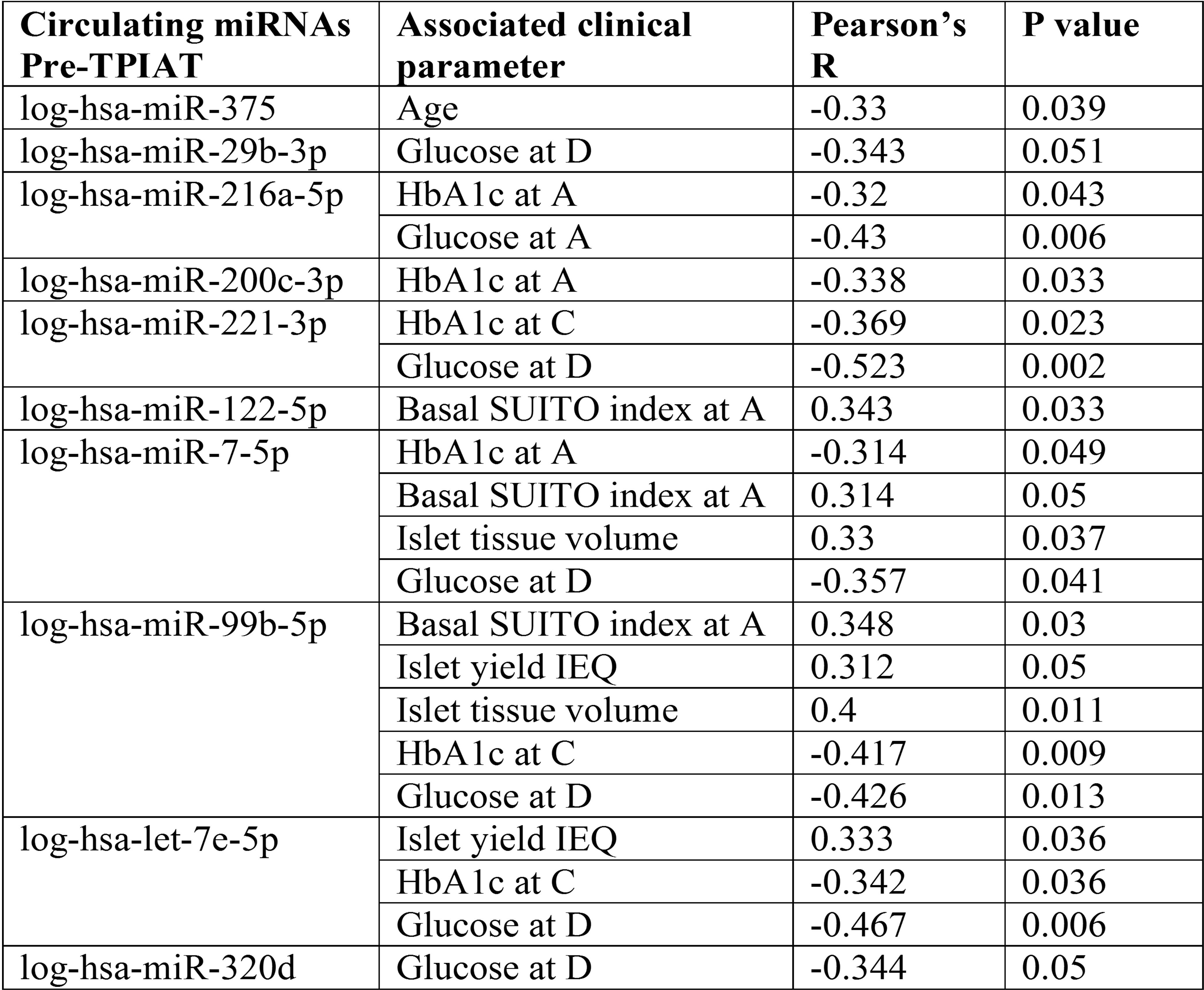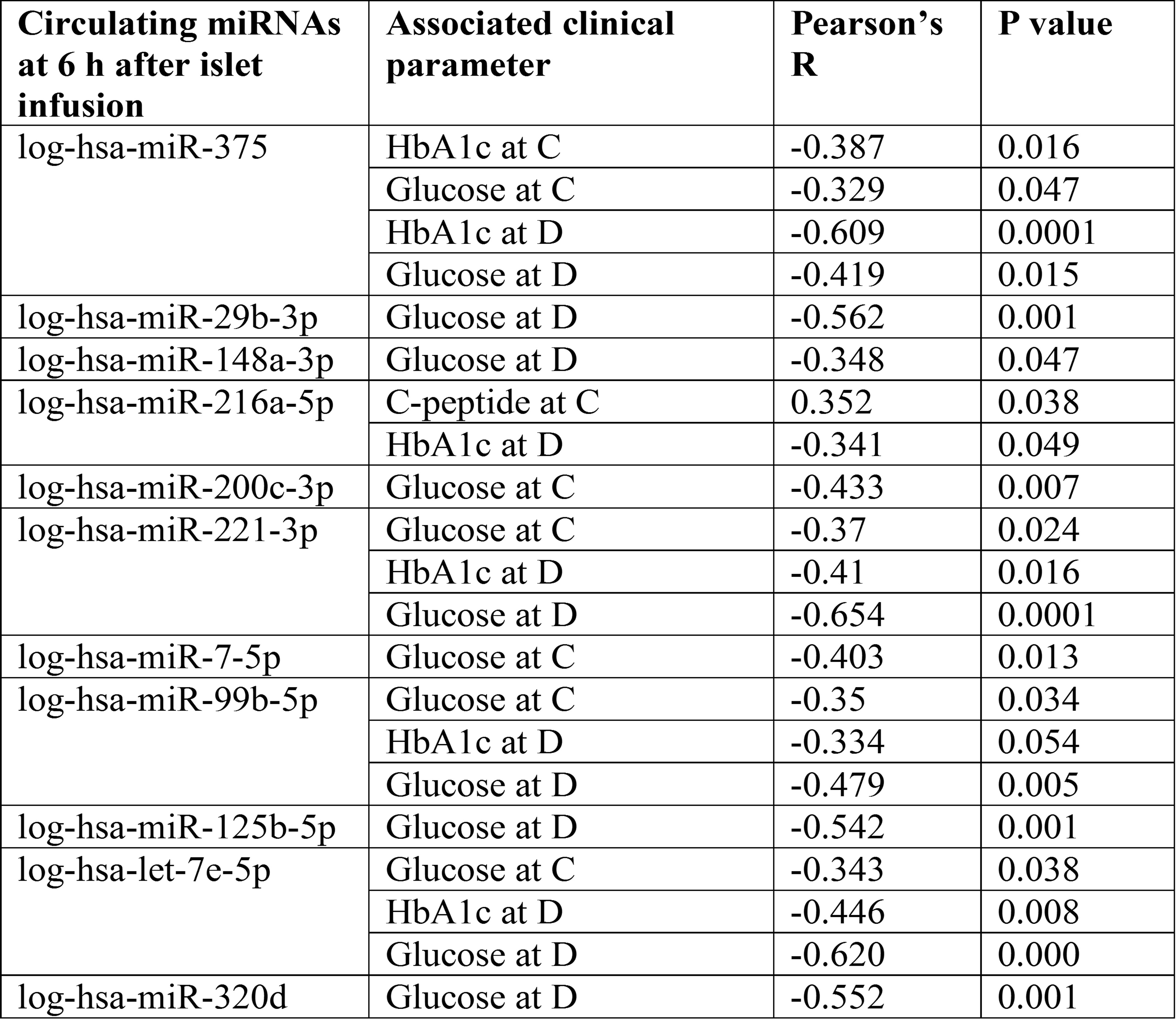Association of circulating miRNAs with clinical parameters in patients undergoing Total Pancreatectomy with Islet Auto-Transplantation (TPIAT)
Srividya Vasu1, Giovanna Saracino2, Carly M. Darden3, Yang Liu2, Michael C. Lawrence1, Bashoo Naziruddin2.
1Islet Cell Lab, Baylor Scott and White Health Research Institute, Dallas, TX, United States; 2Baylor Simmons Transplant Institute, Baylor University Medical Center, Dallas, TX, United States; 3Baylor University, Waco, TX, United States
Introduction: For patients with refractory Chronic Pancreatitis (CP), TPIAT procedure improves chronic pain and prevents brittle diabetes. Our preliminary studies revealed that circulating miR-375, miR-29b-3p, miR-216a-5p, miR-200c-3p and miR-148a-3p were elevated during islet infusion in TPIAT patients. Aims of this study are to investigate circulating microRNA (miRNA) profiles in patients before, during and after TPIAT with a view to understanding their associations with clinical parameters.
Methods: Small RNA sequencing was performed on miRNAs isolated from plasma samples collected from patients before TPIAT (n = 18) and from healthy donors (n = 6). Selected miRNA candidates were validated in a larger cohort of 40 CP patients using miRCURY LNA SYBR green qPCR assays using plasma collected at four time-points: pre-TPIAT, 6 h after islet infusion, 3 months and 1 year after transplantation. Correlation analyses were performed using R software (Version 4.1.0).
Results: Small RNA sequencing revealed that 38 miRNAs were significantly elevated and 5 miRNAs were significantly reduced in circulation compared to healthy controls (p<0.05, p<0.01). Of these, miR-148a-3p, miR-99b-5p, miR-221-3p, miR-122-5p, let-7e-5p, miR-375, miR-200c-3p, miR-29b-3p, miR-7-5p, miR-216a-5p, miR-125b-5p and miR-320d were selected for further investigations. Time-course analysis revealed that miR-375, miR-216a-5p, miR-122-5p were significantly elevated at 6 h after islet infusion (p<0.001) and normalized to pre-TPIAT levels by 3 months after TPIAT. At 3 months and 1 year after TPIAT, circulating levels of miR-29b-3p, miR-125b-5p, miR-7-5p, let-7e-5p and miR-99b-5p were significantly elevated compared to pre-TPIAT levels (p<0.05, p<0.01, p<0.001). Association analyses of circulating levels of miRNAs measured at pre-TPIAT and 6 h after islet infusion time-points are provided in Table 1 and 2 respectively. Interestingly, miR-29b-3p, miR-221-3p, miR-99b-5p, miR-125b-5p and let-7e-5p measured at 3 months were directly associated with insulin requirement (Units/kg body weight) at 1 year after TPIAT (p<0.05). Circulating miR-221-3p and miR-122-5p measured at 1 year after TPIAT were inversely associated with basal secretory unit of islet transplant objects (SUITO) index at 1 year after TPIAT (p<0.05).
Conclusion: Pre-TPIAT levels of hsa-miR-29b-3p, hsa-miR-221-3p, hsa-miR-99b-5p, hsa-let-7e-5p and hsa-miR-320d were associated directly or inversely with post-transplant functional measures (Table 1). Circulating levels of 11 out of the 12 miRNAs tested at 6 h after islet infusion were associated directly or inversely with post-transplant functional measures (Table 2). Further investigations using larger sample size are necessary to establish the predictive potential of selected miRNA candidates.


We acknowledge technical assistance by Mrs Ana Rahman.